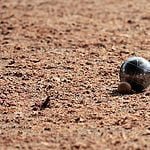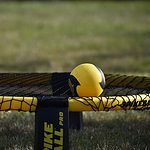Have you ever wondered why you're paying the price you do for your lawn bowling club membership? It's not just about access to the greens; your fees cover a variety of essential aspects that guarantee the club operates smoothly. From maintaining pristine facilities to covering coaching fees and organizing community events, each dollar you spend is allocated to support the sustainable development and enhancement of the club. But is it truly justified, or are there hidden efficiencies that could be explored to adjust these costs? Let's unpack the layers of pricing and see what value truly lies beneath the surface.
Understanding Membership Costs

To comprehend membership costs in lawn bowling clubs, it's important to consider how factors like facility maintenance, equipment upkeep, and administrative expenses impact pricing. Clubs use a management system to carefully calculate these costs, ensuring that they can cover all financial needs while planning for future investments and improvements.
When you join a Lawn Bowls Club, your membership fees aren't just for playing the game; they support a complex structure that guarantees the smooth operation of the club. These fees are set based on an annual budget which includes not just the immediate costs of equipment and facilities, but also the administrative efforts behind organizing events, handling memberships, and maintaining service quality. The management system is designed to balance these costs with the income generated through membership fees.
The pricing strategy is also influenced by the number of members. More members typically mean costs can be distributed more widely, potentially lowering the fees for everyone. However, this isn't just about covering costs; it's also about providing value through amenities such as coaching and social events, which are part of what makes the membership worthwhile. This delicate balance aims to keep the club financially healthy while making it accessible and attractive to new and existing members.
Facility Maintenance Expenses
Understanding the specifics of facility maintenance expenses is key to grasping the financial dynamics of a lawn bowling club. These expenses, averaging at $567 monthly, cover important costs such as water, waste disposal, and electricity, essential for the day-to-day operations.
With the facility provided rent-free by the City of Clearwater, one might assume upkeep costs would be minimal. However, maintaining such a space in top condition requires consistent financial output. The decision to install a well in 2009 highlights a strategic move to reduce long-term expenses related to water usage, a significant aspect of facility maintenance.
Analyzing the bigger financial picture, the dues collected from 45 members primarily fund these maintenance costs. This framework ensures that the facility not only meets the functional requirements of the club but also adheres to city standards and regulations. It's a delicate balance between maintaining affordability for members and ensuring the facility's upkeep isn't compromised. Each dollar spent is an investment into the sustainability and operational success of the club, reflecting a well-thought-out strategy to manage facility maintenance expenses effectively.
Cost of Equipment

When considering the cost of equipment for lawn bowling, you'll find that the quality and durability of bowls play a crucial role in initial expenses. Accessories like mats, jacks, and apparel also contribute to the overall cost, necessitating a careful assessment of necessity versus preference.
Ongoing maintenance and potential replacement costs must be taken into account to guarantee a long-term budgeting plan.
Equipment Quality and Durability
Investing in high-quality lawn bowling equipment, characterized by its durability and premium materials, greatly reduces the frequency of replacements needed. When you consider the longevity of quality bowls, it's clear that the initial higher price can be a wise investment. Here's why:
- Durability: Premium lawn bowling equipment withstands the rigors of regular play, which means you're not constantly outlaying money for new bowls.
- Performance: Precision-engineered bowls offer consistent playability, enhancing your game experience and skill development.
- Material Quality: Superior materials not only last longer but also improve the overall aesthetics and feel of the equipment, contributing to your enjoyment and the prestige of the club.
Analyzing these factors, it's evident that the cost reflects a commitment to excellence in lawn bowling.
Accessory and Apparel Necessities
Evaluating the costs of essential accessories and apparel is important as they've a significant impact on lawn bowling club membership pricing. When you join a lawn bowling club, you're not just paying for access to the greens; you're also investing in the necessary equipment.
Specialized bowls, important for the sport, can set you back anywhere from $300 to $700. Additionally, proper attire, including shoes, is required to participate. This proper attire not only guarantees compliance with club standards but also influences performance and comfort during play.
Clubs often provide various options for equipment acquisition, like rental or purchase, to help manage these costs. This flexibility aids in accommodating the budget constraints of different members, influencing the overall membership fees.
Maintenance and Replacement Costs
Maintenance and replacement costs significantly impact your lawn bowling club membership fees, as they cover the upkeep of greens, equipment, and facilities. The financial commitment to maintaining a Bowls Club isn't trivial, especially when you consider the quality and durability required for lawn bowls equipment. Here's precisely what your fees contribute to:
- Regular Greens Maintenance: Guaranteeing the playing surface is always in top condition.
- Equipment Upkeep: Routine servicing and repairs of lawn bowls, mats, and jacks.
- Facility Care: Addressing wear and tear on clubhouses and scoreboards.
This investment in equipment maintenance and facility care ensures that every game you play is smooth, uninterrupted, and up to standards, truly reflecting the value embedded in your membership costs.
Coaching and Training Fees

Coaching and training fees included in your lawn bowling club membership are essential for covering the costs associated with professional instruction and skill enhancement. These fees vary based on the coach's expertise and the training session's frequency and duration. Whether you're playing with the classic white ball on open days or practicing in both indoor and outdoor facilities, the quality of coaching greatly impacts your skill development and enjoyment.
Here's a breakdown of how these fees contribute to club operations:
| Aspect | Detail | Impact on Member Experience |
|---|---|---|
| Certified Coaches | Higher fees for more experienced coaches | Enhanced skill development |
| Frequency of Sessions | Regular training schedules | Consistent improvement |
| Training Environments | Access to both indoor and outdoor facilities | Versatile playing experience |
Clubs often employ certified coaches or experienced members for training, which adds to the membership cost. However, this ensures that you receive valuable guidance that enhances your gameplay. The investment in quality coaching and structured training programs justifies the membership fees, providing you with an environment where you can thrive both competitively and socially.
Administrative Overheads
While administrative overheads may not directly impact gameplay, they're essential for the efficient management of club operations and member services. You might wonder why your lawn bowling club membership costs what it does. Here's a breakdown of how administrative overheads factor into this:
- Office Supplies and Software: Everything from printer paper to specialized software licenses makes it easy for the club to handle everything from member registration to event scheduling seamlessly throughout the year.
- Staff Salaries: Administrative staff are the backbone of club operations. They guarantee smooth communication and effective record-keeping, which are vital for maintaining the club's standards and compliance with various regulations.
- Accounting and Insurance: Your membership fees contribute towards necessary accounting services and extensive insurance coverage, safeguarding the club's financial health and legal standing.
Understanding these costs helps justify the pricing of memberships. Allocating funds wisely to cover these expenses ensures the club operates smoothly and continues providing excellent service. Therefore, when you pay your membership fee, you're not just investing in your leisure but also in a well-oiled administrative machine that supports your club throughout the year.
Event Organization Funding

When you contemplate joining a lawn bowling club, it's vital to understand how your membership fees are utilized, particularly in funding event organization. These fees cover significant costs such as venue rental, ensuring the club can secure appropriate locations for tournaments and leagues.
Additionally, your contributions help maintain necessary equipment and provide catering and refreshments during events, enhancing the overall experience for all members.
Venue Rental Costs
Understanding how venue rental costs impact lawn bowling club memberships is essential for maintaining the club's financial health. The expenses incurred from renting facilities for events directly influence the club's budget and, consequently, the pricing of memberships.
- Event Scale and Frequency: Hosting frequent or large-scale events increases rental costs, necessitating higher membership fees to balance the budget.
- Venue Choices: Opting for premium venues can enhance member experiences but also raises rental expenses, impacting membership costs.
- Revenue from Events: Effective event organization can generate significant revenue, helping to offset the high costs of venue rentals and stabilize membership pricing.
Equipment and Maintenance
Equipment maintenance and event organization funding are essential components of membership pricing, ensuring that facilities and playing tools are always in top condition for members. Your membership fees directly support not just the upkeep of specialized plastic bowls but also the broader range of equipment needed for gameplay and events. This includes maintaining the quality of the playing surfaces and updating facilities to meet operational demands.
Additionally, these funds cover essential expenses like water, waste disposal, and electricity during events, ensuring that the club operates smoothly without hiccups. By contributing to these costs, you help sustain the club's ability to provide a high-quality experience, keeping equipment functional and events well-coordinated.
Catering and Refreshments
How does your membership fee contribute to the club's social events? Through covering catering and refreshment costs, your contributions guarantee that each club gathering is both nourishing and delightful. Here's how your fees are effectively utilized:
- Ingredient Acquisition: Funds are allocated for purchasing quality ingredients essential for preparing meals and beverages.
- Meal Preparation: Professional chefs are hired to make sure that meals aren't only tasty but also well-balanced, enhancing the overall event experience.
- Service Provision: Efficient staff is employed to serve these refreshments, contributing to the smooth operation of club events.
Green Maintenance and Upkeep

Maintaining the green, including mowing, watering, and fertilizing, is essential to guarantee a high-quality playing surface and prevent common issues like moss and weeds. Regular and precise upkeep is important because it directly impacts how the game is played. For instance, uneven or poorly maintained greens can distort the path of bowls, affecting players' performance and satisfaction.
Investing in professional greenkeepers is a strategic decision. They bring expertise in agronomy that ensures the turf is healthy and resilient, reducing long-term restoration costs. You're not just paying for their time; you're investing in their knowledge to efficiently manage tasks like soil pH balancing and disease control, which are essential for turf longevity.
Moreover, the costs associated with green maintenance aren't just about keeping the grass cut. They cover the upkeep of mowing equipment, watering systems, and fertilizers. Equipment needs regular servicing to function optimally, and sometimes, replacements are necessary when parts wear out. This proactive approach to maintenance helps in avoiding sudden breakdowns that could disrupt club activities and result in more significant expenses. These ongoing costs are reflected in the pricing of club memberships, ensuring that members enjoy uninterrupted access to high-quality facilities.
Facility Improvement Costs
As you consider the cost of lawn bowling club memberships, it's important to understand how facility improvement costs are factored in.
Upgrading green surfaces and clubhouse renovation expenses are significant components that drive membership pricing. These improvements are funded by your fees and are essential for maintaining the club's standards and enhancing your experience as a member.
Upgrading Green Surfaces
Upgrading the club's green surfaces involves significant expenses for materials like artificial turf or specialized grass seeds, as well as installation costs including labor and machinery rental. The decision to invest in these upgrades isn't taken lightly, as it directly impacts both the playability and attractiveness of your facility. Here's what you're looking at regarding breakdown:
- Material Costs: High-quality surfaces like artificial or hybrid grass command premium prices.
- Labor and Equipment: Professional installation isn't cheap; you'll need skilled workers and possibly heavy machinery.
- Ongoing Maintenance: After installation, regular care is essential to maintain excellent conditions.
This investment enhances the club's facilities, attracting new members and ensuring a high-quality experience, solidifying the club's reputation as a top-tier venue.
Clubhouse Renovation Expenses
Why should you consider the costs involved in clubhouse renovation?
The expenses, which include updating restrooms, repairing flooring, and enhancing common areas, are important for maintaining a competitive and appealing facility.
These renovations often extend to installing new equipment, improving lighting, and upgrading security systems to align with modern standards.
Your club's funding for these projects typically comes from membership dues, fundraising efforts, and sponsorships.
It's important to understand that these investments aren't merely aesthetic; they're about creating a more functional and welcoming space.
This, in turn, attracts new members and boosts overall satisfaction, ensuring the club's long-term vitality and appeal in a competitive market.
Community Engagement Programs

Community engagement programs at lawn bowling clubs effectively extend the sport's reach through strategic partnerships and local initiatives. By tapping into the network of schools, community centers, and businesses, these clubs not only boost their visibility but also enhance their relevance within the community. You'll notice that these efforts are essential in attracting a broader demographic, which in turn supports the club's sustainability and growth.
Here's how these programs impact the clubs and the communities:
- Outreach Initiatives: Programs like open days, workshops, and school leagues introduce the sport to new audiences, ensuring a continual influx of potential members.
- Events: Hosting local tournaments and social gatherings increases the club's visibility and positions it as a community hub, encouraging locals to participate or join.
- Partnerships: Collaborations with local businesses and organizations provide mutual benefits, including sponsorship opportunities and co-hosted events, which strengthen community ties and support financial stability.
These strategies not only foster a positive image of the club but also create a sense of belonging among members and the local populace. As a result, they not only maintain but often increase the value and demand for memberships, justifying the pricing strategy. Engaging with your community isn't just about growth; it's about creating a thriving ecosystem where lawn bowling flourishes.
Club Development Strategies
Effective club development strategies enhance member satisfaction and operational efficiency through targeted improvements in facilities and services. By investing in the maintenance and upgrades of your club's infrastructure, you're not just maintaining the status quo, but actively enhancing the member experience. This focus on facility enhancement is critical as it directly impacts the perception and satisfaction of members, which in turn influences retention rates.
Strategic planning and robust financial management form the backbone of sustainable growth. You must align your club's development goals with financial resources to make certain that improvements aren't just desirable but also feasible. This alignment is crucial in preventing financial overreach while still achieving necessary upgrades and expansions.
Your club's engagement in community outreach and hosting of events plays a significant role in attracting new members and retaining existing ones. This dual approach not only boosts membership numbers but also strengthens community ties, enhancing the club's reputation and appeal.
Lastly, continuous improvement and innovation are essential. They ensure that your club remains relevant and appealing in a competitive market. By adopting innovative practices and continuously seeking to improve, you're setting your club up for long-term success.
Membership Benefits and Value

Members enjoy a wide range of benefits that justify the cost of their annual membership fees. When you join a lawn bowling club, you're not just paying for the use of the green; you're investing in a complete package that enhances your physical, mental, and social well-being.
Here's what you're getting:
- Access to Facilities and Equipment: You have unlimited access to well-maintained bowling greens and state-of-the-art equipment. This guarantees you can play whenever you wish, without the added cost or hassle of arranging your own gear and venue.
- Professional Coaching and Competitions: Membership often includes coaching sessions from experienced players that can significantly improve your game. Additionally, you get the chance to participate in leagues and tournaments which are excellent for testing your skills and gaining competitive experience.
- Social and Community Events: Clubs frequently host social events that help in building a community. These gatherings range from casual meetups to organized social events, providing a great opportunity to meet new people and forge friendships.
The pricing strategy reflects these benefits and ensures the club can maintain its facilities and offer high-quality experiences. This tiered pricing model allows you to choose a membership that best suits your needs and budget, ensuring you get the most value out of what you spend.
Conclusion
To sum up, your Lawn Bowling Club membership fees are meticulously structured. Like cogs in a well-oiled machine, each cost element—from facility upkeep to coaching fees—interlocks to guarantee the club's sustainability and quality.
This strategic pricing not only covers operational costs but also enhances member experience through diverse programs and facility upgrades. Investing in these memberships means contributing to a thriving community and reaping substantial benefits, aligning with the club's long-term growth strategy.





